July 10, 2006
Multiple Endocrine Neoplasia (MEN)
Multiple Endicrine neoplasia: A group of heritable syndromes characterized by abherant growth of benign or malignant tumors in a subset of endocrine tissues.
• Types
o MEN I: tumors involving the parathyroid glands; endocrine pacreas; and the pituitary
o MEN IIA: medullary carcinoma of the thyroid gland; pheochromocytoma; and hyperparathyroidism
o MEN 2B: medullary carinoma of the thyroid; multiple neuromas; and pheochromocytoma
MEN I (Wermer’s syndrome)
• Autosomal dominant
• 2-20/100,000
• features:
o hyperparathyroidism*
o enteropancreatic tumors (gastrinomas/Zollinger-Ellison syndrome; VIPomas; glucagonomas; insuilinomas)**
o pituitary adenomas (prolactinomas)***
o adrenal adenomas
o carcinoid tumors
o facial angiofibromas
*Note: Predator attacking victim’s parathyroid (hyperparathyroidism)gland by grasping either side of the victim’s neck
**Note: Predator attacking the victim by kicking him to the abdomen inducing tumors.
***Note: Predator attacking the victim’s pituitary gland by poking the victim between his eyes inducing pituitary adenoma.
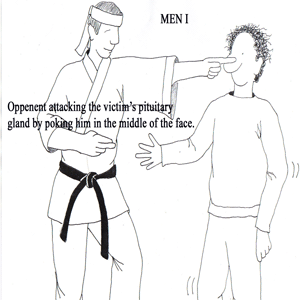
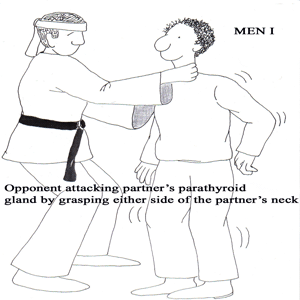
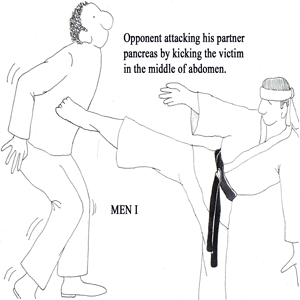
• Symptoms are related to the respective tumors
• Treatment
o Hyperparathyroidism
• Partial or total resection of parathyroid glands
• Prophylactic thymectomy
o Gastrinomas
• Proton pump inhibitors
• Correction of hypercalcemia
MEN II
• Autosominal dominant
• 1-10/100,00
MEN IIA (Sipple’s syndrome)-like sheep
• features
o medullary carcinoma of the thyroid (80-100%)*
• calcitonin producing parafollicular cells
o hyperparathyroidism**
o pheochromocytoma (50%)
• Hypertension; headache; palpitations; diaphoresis
• Super-strength demonstrated by the sheep after conquering the victim indicates the elevated catacholamines ***
o Hirschsprung’s disease
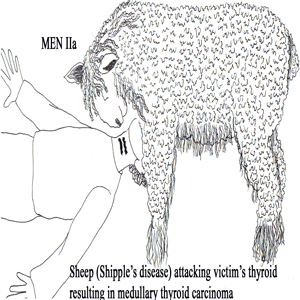
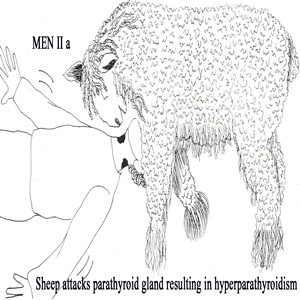
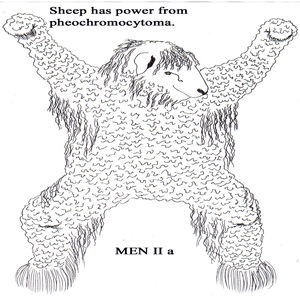
*Note: Sheep attacking victim’s thyroid resulting in medullary thyroid carcinoma
**Note: Sheep attacks parathyroid gland resulting in hyperparathyroidism
***Note: Sheep has power after eating the very nutritional thyroid and parathyroid organs and develops pheochromocytoma
MEN IIB (MEN III)
• Features
o Medullary carcinoma of the thyroid*
o Pheochromocytoma**
o Marfanoid body habitus
o Multiple neuromas of the conjunctiva; lips; labia; tongue; mucosa; larynx***
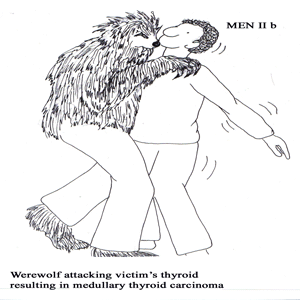
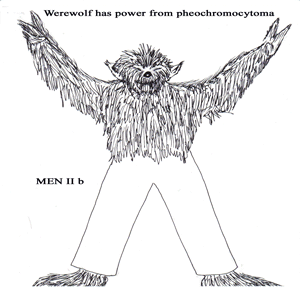
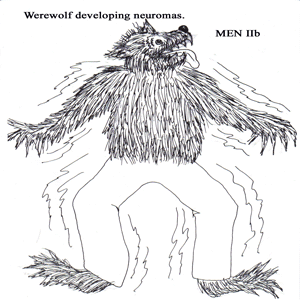
*Note: Werewolf attacking victim’s thyroid resulting in medullary thyroid carcinoma.
**Note: Werewolf now becomes very powerfull immediatelly, and develops pheochromocytoma after eating the thyroid gland.
***Note: Werewolf develops neuromas from all the energy produced from the pheochromocytoma.
Posted by mmw at 03:16 PM | Comments (0)